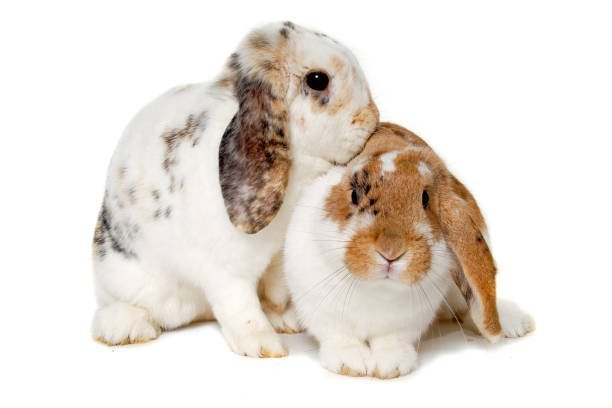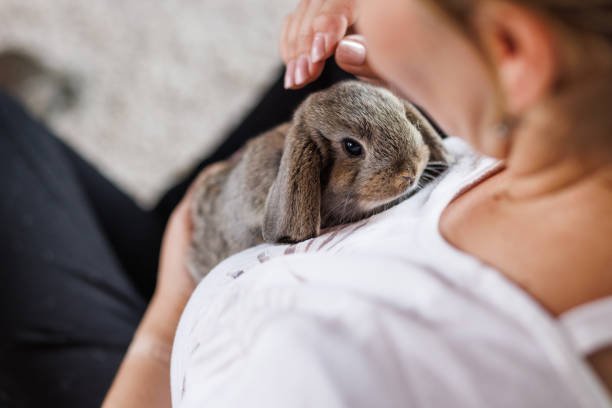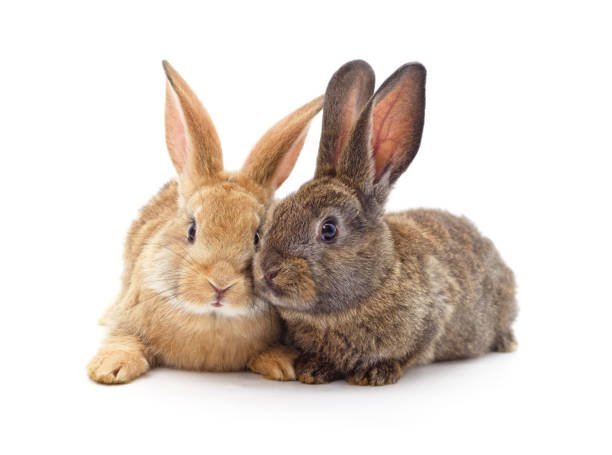How can I create a safe and comfortable environment for a rescued rabbit at home?

Introduction:
In this article, I’ll guide you through the essential steps to create a safe and comfortable environment for a rescued rabbit in your home. Welcoming a rescued rabbit into your life can be a rewarding experience, but it comes with responsibilities. Rabbits are delicate creatures that require specific care and attention to thrive in a domestic setting. Whether you’ve recently adopted a rabbit from a shelter or found one in need of a home, providing a secure and cozy habitat is paramount to their well-being.
We’ll explore the key aspects of rabbit care, including suitable housing, nutrition, and social interaction. Understanding the rabbit’s natural behaviors and needs is crucial to ensuring their happiness and health. From designing an appropriate enclosure to offering a balanced diet and creating a nurturing atmosphere, this article will equip you with the knowledge and skills to give your rescued rabbit the best possible life in your home.
Secure and Spacious Enclosure:
The foundation of a rabbit’s well-being is a secure and spacious enclosure. Rabbits are known for their inquisitive and active nature, making it vital to provide them with ample room to move around. A rabbit hutch or pen should be designed with their specific needs in mind. It should be large enough to allow them to stretch, hop, and even stand on their hind legs without restrictions. Additionally, the enclosure should feature a solid, secure bottom to protect their sensitive feet and prevent them from digging their way out. It’s essential to place the enclosure in a safe, predator-free area, and consider protection from the elements, as rabbits are sensitive to extreme temperatures.
A well-ventilated enclosure is vital to ensure fresh air circulation, preventing respiratory issues. While providing your rabbit with a secure outdoor space can be beneficial, it’s equally important to have an indoor area for them in case of inclement weather or for nighttime shelter. Always ensure the enclosure is predator-proof, as rabbits are vulnerable to attacks from various animals. Regularly inspect the enclosure for wear and tear and repair any damage promptly to maintain a secure environment for your rescued rabbit.
Proper Bedding and Litter:
The choice of bedding and litter for your rabbit’s enclosure is another critical consideration. It directly affects their comfort, hygiene, and overall well-being. A rabbit’s sensitive feet require a soft, comfortable surface to prevent sore hocks, which can be painful and lead to health problems. Straw or hay can be used as bedding, offering a cushioning effect for your rabbit. However, avoid using cedar or pine shavings, as they can emit harmful fumes that are detrimental to a rabbit’s respiratory health.
In addition to bedding, the litter you select for your rabbit’s enclosure plays a vital role in maintaining cleanliness. Pelleted litters are commonly used, as they are absorbent and help control odor. Some owners prefer paper-based litters, which are also safe and comfortable for rabbits. It’s essential to keep the litter clean and change it regularly to prevent the buildup of ammonia and bacteria, which can lead to health issues. Maintaining a clean and hygienic living space is crucial for your rabbit’s health and comfort.
Nutrient-Rich Rabbit Diet:
Proper nutrition is a cornerstone of creating a safe and comfortable environment for your rescued rabbit. A well-balanced diet is essential for their health, longevity, and overall well-being. Rabbits are herbivores, primarily feeding on hay, fresh vegetables, and a small amount of commercial rabbit pellets. The majority of their diet should consist of high-quality hay, such as timothy hay or grass hay, which provides essential fiber for their digestive health.
Fresh, leafy greens and vegetables are also vital components of a rabbit’s diet. These include items like kale, parsley, spinach, and carrots. However, it’s crucial to introduce new foods gradually and observe your rabbit for any adverse reactions. Commercial rabbit pellets can be offered in moderation, but they should not be the primary source of nutrition. Additionally, rabbits require a constant supply of fresh, clean water, which should be provided in a spill-proof bowl or a drip-feed water bottle.
Maintaining a consistent and appropriate diet for your rabbit is essential to prevent health issues such as obesity and gastrointestinal problems. Overfeeding should be avoided, and portion control is essential to ensure your rabbit’s nutritional needs are met without excess. Proper nutrition contributes to their overall comfort and well-being.
Fresh Water Supply:
A constant supply of fresh water is essential for a rabbit’s well-being. Water plays a crucial role in their digestion and overall health. It’s important to provide your rescued rabbit with clean water at all times. This can be done using a spill-proof bowl or a drip-feed water bottle, which helps prevent water contamination and ensures a continuous source. Regularly check and clean the water container to maintain hygiene and ensure your rabbit always has access to clean, fresh water.
Water consumption varies among individual rabbits, so monitoring their water intake is important. Changes in water consumption can be an early indicator of health issues, so being attentive to their water habits is essential. By maintaining a steady supply of fresh water, you contribute to your rabbit’s comfort and health, preventing dehydration and promoting optimal hydration.
Bunny-Proofing Your Home:
Rabbits are naturally curious and love to explore, making it necessary to bunny-proof your home to create a safe and comfortable environment. This involves identifying potential hazards and securing them to prevent accidents. Common hazards include electrical cords, poisonous plants, and small objects that a rabbit might chew on or swallow. Covering or bundling cords, removing toxic plants, and keeping small items out of reach are crucial steps in creating a safe space for your rabbit.
Consider using baby gates to limit access to certain areas of your home and protect your rabbit from potential dangers. Supervise their interactions with other pets, and introduce them gradually to ensure a harmonious living environment. Regularly inspect your home for new hazards and make necessary adjustments to maintain a secure and rabbit-friendly living space. By taking these precautions, you provide your rescued rabbit with the freedom to explore safely, contributing to their comfort and well-being.
Toys and Mental Stimulation:
Rabbits are intelligent and social animals that require mental stimulation and physical activity to stay happy and healthy. Providing a variety of toys, such as tunnels, puzzle feeders, and chew toys, can keep your rabbit mentally engaged and prevent boredom. Boredom can lead to destructive behaviors and stress, so it’s important to offer them an enriching environment.
In addition to toys, social interaction is a key component of mental stimulation for rabbits. Spend time with your rabbit, engaging in activities like gentle petting, grooming, and interactive play. This not only provides mental stimulation but also strengthens the bond between you and your rescued rabbit. Creating a stimulating and interactive environment contributes to their overall comfort and well-being.
Regular Veterinary Check-ups:
Regular veterinary check-ups are crucial to ensure the health and well-being of your rescued rabbit. A qualified veterinarian with experience in treating rabbits can perform routine health assessments, administer necessary vaccinations, and provide guidance on maintaining their health. It’s essential to establish a relationship with a rabbit-savvy veterinarian who can address any health concerns promptly.
Common health issues in rabbits may include dental problems, gastrointestinal issues, and respiratory infections. Early detection and treatment are vital in addressing these issues effectively. Regular check-ups, along with a vigilant eye for any signs of illness or discomfort, help ensure your rabbit’s health and contribute to their overall well-being.
Social Interaction and Bonding:
Rabbits are social animals that thrive on companionship and interaction. If possible, consider adopting a second rabbit to provide your rescued rabbit with a companion. However, introductions should be done gradually and under supervision to ensure compatibility. If a second rabbit isn’t an option, you can still provide essential social interaction.
Spending time with your rabbit, talking to them, and engaging in gentle handling and petting can help strengthen your bond. Understanding your rabbit’s body language and preferences is essential for creating a positive and comforting environment. Rabbits can form deep connections with their human caregivers, and your presence and affection contribute to their overall well-being and happiness.
Conclusion:
I hope this article has provided you with valuable insights into creating a safe and comfortable environment for a rescued rabbit in your home. Ensuring the well-being of these gentle and sensitive creatures is a rewarding journey that demands commitment and attention to detail. By following the guidelines discussed, you can provide your rabbit with a secure enclosure, comfortable bedding, a nutritious diet, and regular veterinary care. Bunny-proofing your home and offering toys for mental stimulation contribute to a happy and thriving rabbit. Moreover, the essential element of social interaction and bonding forms a strong foundation for a fulfilling life together.
Remember that every rabbit is unique, and understanding your specific rabbit’s needs and preferences is vital. By tailoring your care to suit their individual requirements, you can foster a deep and loving relationship while offering them the safe and comfortable home they deserve. Your dedication to their well-being ensures that your rescued rabbit will flourish in their new environment.










Post Comment